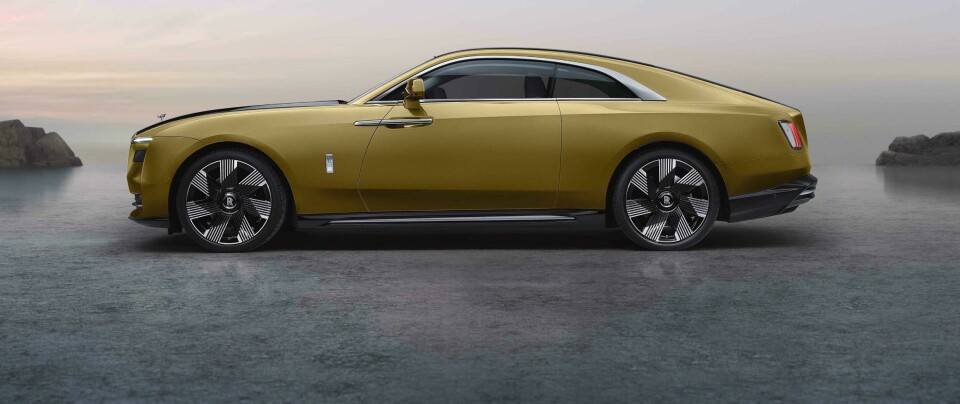
Rolls-Royce brings spirit of electric to new Spectre
The new Spectre is a Rolls-Royce first and electric car second. Anders Warming gave Car Design News some insight into the design of what is one of the most significant launches for the brand to date
The Spectre is not only the first battery-electric model for Rolls-Royce, it also ushers in a number of key design language changes. Some of these have come about because of the need to optimise aerodynamics to enhance the electric driving range.
Director of design for Rolls-Royce, Anders Warming, and his team spent a great deal of time in a wind tunnel perfecting the design to the point where the aerodynamic co-efficient is just 0.25 without compromising on the key design elements a Rolls-Royce client expects. But at the same time, the Spectre also gave him the opportunity to try something different.
Aerodynamics are key but not all the aero features are obvious. For example, the black lip spoiler at the front extends along the lower side sills and into a discreet diffuser at the rear, with the idea that the car should appear to be floating on it, like a yacht on the water. Then there’s the presence that a Rolls-Royce should have, starting of course with the dominant frontal design. The facade of a Rolls-Royce is its most famous view, dominated for over a century by the large pantheon grille and the famous Spirit of Ecstasy. There’s a big change to that grille, now the widest in the marque’s history, but it is surrounded by more design changes says Warming.
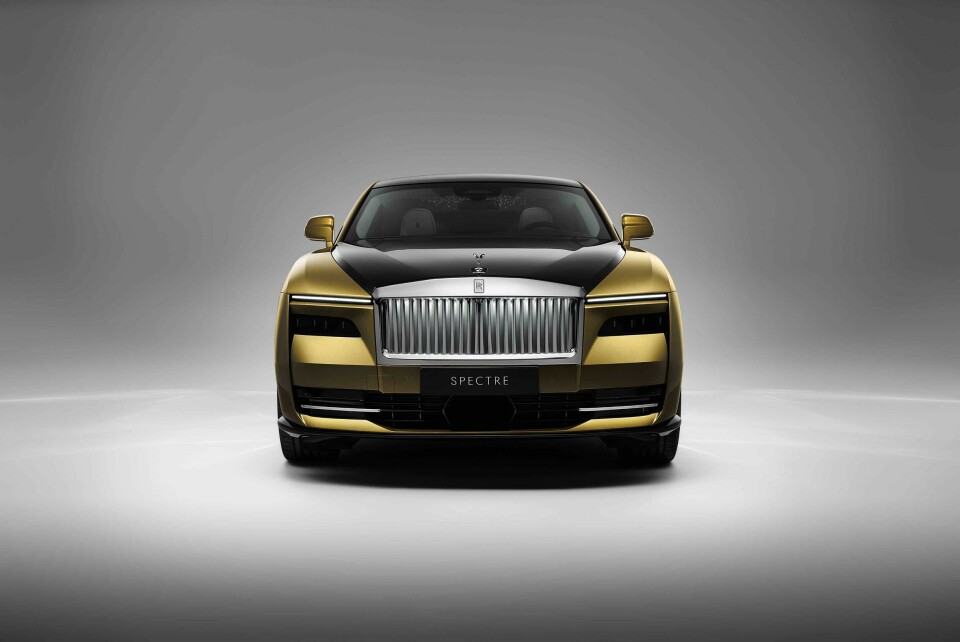
“The grille is a Rolls-Royce icon. It is made out of real stainless steel and it makes the sound of metal, you know it’s real,” he says. “It’s also been aerodynamically optimised, so if you look from the side, it’s slightly leaning back. The top part of the pantheon grille is a 55-degree angle now, that has been done due to aerodynamic optimisation. That angle helps us set up the wind correctly for the rear of the car.”
The width also offsets the fact that the grille is more angled, ensuring the Spectre still has significant presence at the front, something that Warming says is particularly important for a super coupé. Then there’s the Spirit of Ecstasy herself, again optimised for aerodynamics. Her wings are now flatter and more tucked in, part of a lower stance to help her cut through the air more cleanly and of course, elegantly. Elegant also accurately describes the side profile, which features a number of new design themes for the brand.
“We’ve got a new feature line in the door, which is a completely different proposition [to the Wraith],” says Warming. “We call it the waft line, the lower part of the door.” That line also has a peak to it which Warming is proud of because he says it makes the side profile reflect a style of modern architecture. There are two other prominent design pieces in the side profile, the first being that the pillarless B-post is as far back as possible, close to the rear wheel.
The roofline is pure Rolls-Royce. It has a certain element of presence and consequence
“We worked hard on a similar proportion behind the door and in front of the door. The second thing we worked on having positioned the B-pillar is to create an angle of the front door card, because we could potentially go a little more straight up and down, but then you would have two of the same lines in the side view,” says Warming. “We were really working on getting that line as far forward as possible so it gives the car a sense of movement. If it’s just a vertical line, which would be pragmatic and practical, it wouldn’t have that. That’s also how we got to the measurement of 1.5m for the width of the coach doors.”
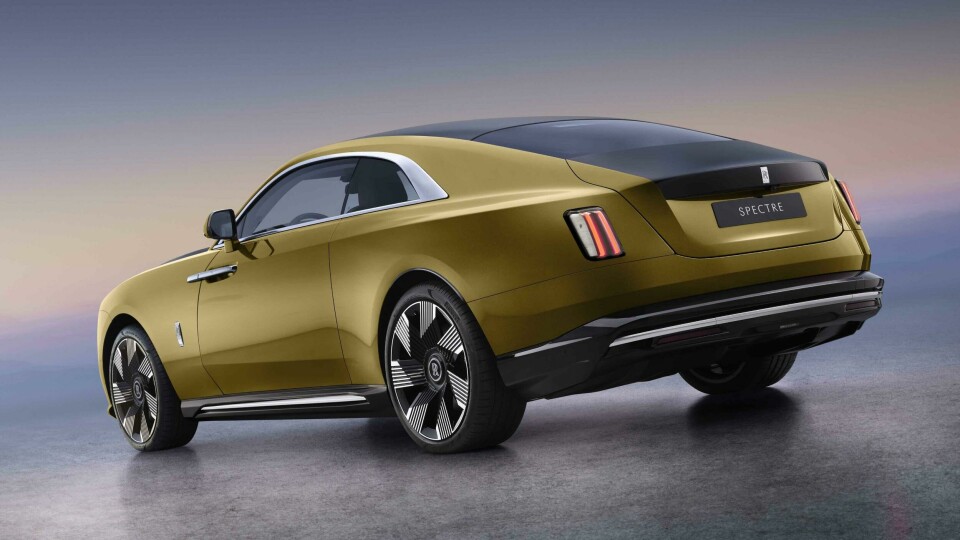
Those doors are the widest in Rolls’ history and while they dominate the side view, another key point is the emphasis of the window surround and the formation of the body panel beneath it. It is one of Warming’s favourite parts of the car because there is almost a 45-degree angle in the aluminium panel, something that was a major challenge for the engineering team.
The rear has a classic swept tail look about it, but as with the rest of the car, Warming is insistent that the theme is one of restraint, with only a few key design elements being highlighted, such as the taillights, which he describes as being like “islands in a lake.”
“What we learned in design school and in product design is when you have an element, you somehow tie it up into a cut line, but at Rolls-Royce we do it differently,” Warming says. “We make sure that the elements are away from the cut lines, so the Spirit of Ecstasy sits by herself on the surface with no cut lines. The taillights are set in from the back at the end of the assembly process.”
“We also have the saying: restraint, then embellishment. It’s a process,” he continues. “A Rolls-Royce should never look busy, it’s completely tailored, clean, to the point. That’s why we say restraint then embellishment – hold off, hold off, hold off and then you add the lights afterwards.”
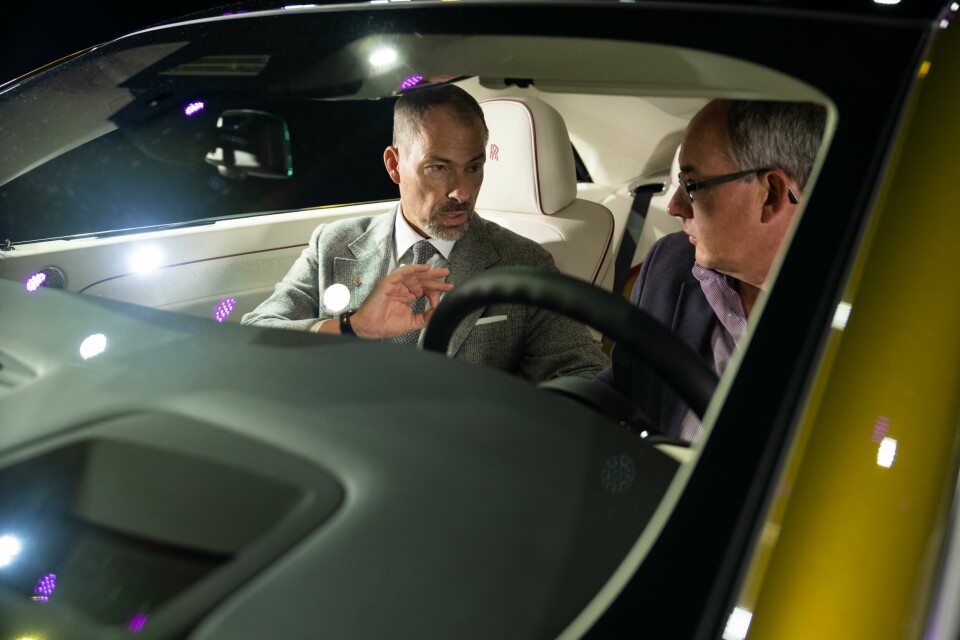
The Spectre might be a brand new model, but there is plenty of familiarity in the interior design, especially in the instrument panel. Technology is used discreetly, with Warming saying that the focus is very much on the jewellery pieces including the famous organ stops. “There’s a certain haptic interaction,” he says. “The volume control is just the volume, but there’s a certain celebration of that. Seeing the air vents, there’s a celebration of that feature, even the actual buttons, especially the door handles that are cold to the touch. You can do it with buttons, but our clients really appreciate our jewellery pieces.”
We have an opportunity to use something special, but we can also custom make and tailor a human-made veneer to a car
Apparently they also appreciate the starlight headining, so much so that they asked for it in other places. In the Spectre they are incorporated into the doors and the passenger side instrument panel where clients can also have an illuminated Spectre script. Extensive development work was conducted on the seats, too, with the idea that passengers should sit in them rather than on them. That’s even more true in the rear, where the idea was to create a lounge-like feel.
“Geometrically we talk about the cossetting lounge in a Rolls Royce,” he says. “For the first time, the shoulder goes all the way up and becomes the armrest, so when you sit in the back, you almost have this idea that you can sit and have a conversation because you can lean into that vast surface. That was a very tricky design to make, basically a one-piece leather surface that goes around the corner and gives more of a lounge feel to it.”
Then there are the materials, but here the team have maintained a traditional line. “Basically what we’re working on is a known palette of material like the leathers and the woods that we use. One of the things that we have already in the Ghost but we also use in the Spectre is human-made veneers. We have an opportunity to use something special, but we can also custom make and tailor a human-made veneer to a car.”
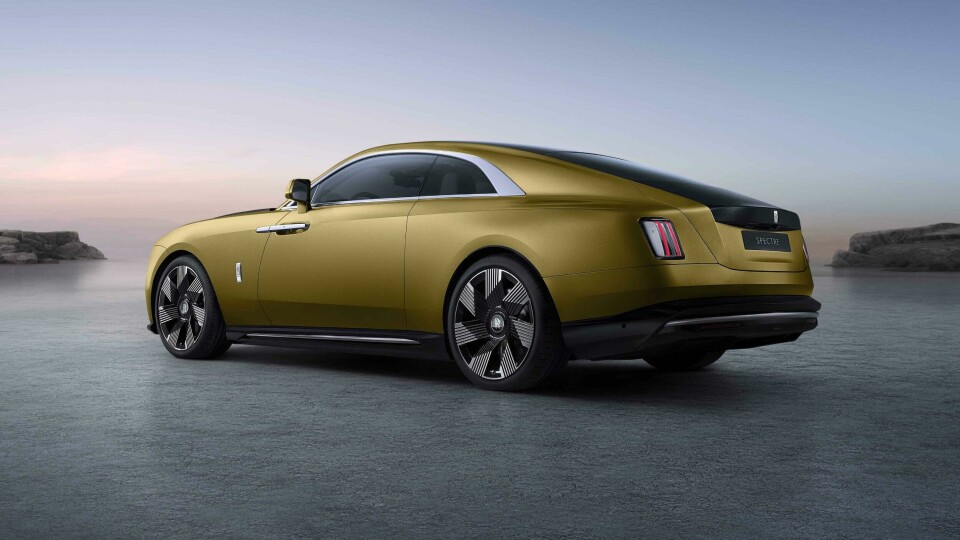
There are many new elements to Spectre that provided great opportunities, but implementing a new design language for such an esteemed brand is not easy. So which element of Spectre’s design is Warming most proud of?
“For me it is the roofline, which is pure Rolls-Royce. It has a certain element of presence and consequence. With the roofline, you have so many inputs: the headroom clearance, the starlight headliner, all the packaging that works into that, the getting in and out of the car and the second row, all these technical things that you can measure. Then the requirements of optimised aerodynamics. Being able to do this roofline with such purity, that was, for me, the key statement.”
It’s all part of making the Spectre a Rolls-Royce first and an electric car second. But did tradition and the expectations of Rolls-Royce clientele place any constraints on Warming and his team – are there more radical designs hidden in his desk drawer?
“We see ourselves not just as curators of the brand but also as the custodians of the brand,” he says. “We wish that even in 100 years’ time, we will be the design team that people will say did a good job. There are no ideas hidden in the drawers. This was such a clear emotional statement. You can do your dream car and make it electric.”























